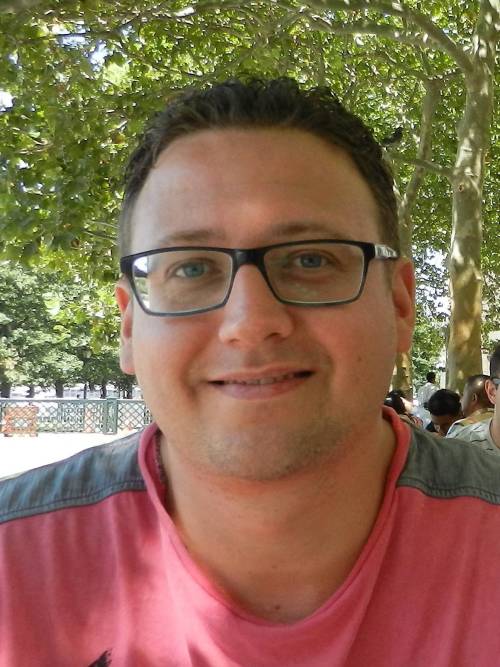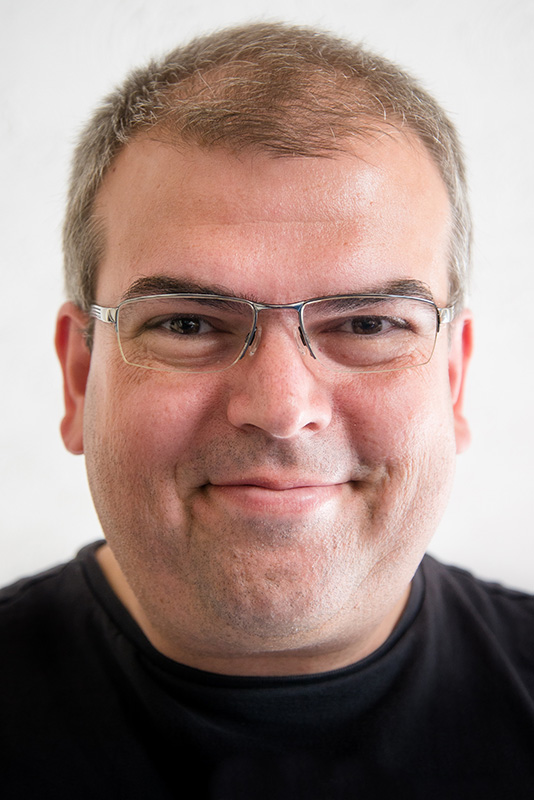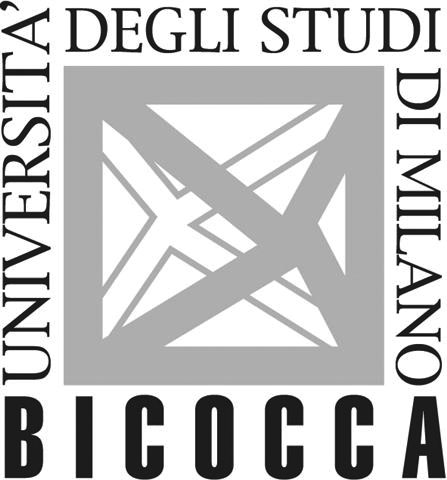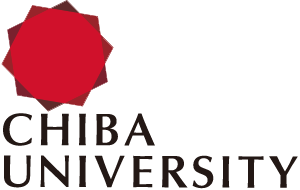Tutorials
Prof. Shoji Tominaga
Measurement and Modeling of Material Appearance
Abstract: The objects we come across in our daily lives are made of various materials such as
plastics, metal, and cloth. These materials have the characteristics of inherent
appearance. The visual impression perceived by a human observer mainly derives from
the material appearance. In fact, the material appearance is crucial for object
identification, object understanding, object value judgement, and object image
rendering. Material appearance is a new academic area that crosses several fields
including color imaging science and technology.
This tutorial provides a foundation for
measurement and modeling of material appearance. The foundation is based on the
physics and psychophysics of how light interacts with materials, how human observers
perceive and specify appearance, and how we can describe appearance by a
mathematical model.
Material appearance and reflection properties
Standard dichromatic reflection models
BRDF measurement and 3D reflection models
Interreflection phenomenon
Fluorescent material appearance
Prof. Francesco Bianconi, Prof. Claudio Cusano, Dr. Paolo Napoletano
Color texture analysis and classification
Abstract: Recognizing real-world materials in images is a challenging task due to the rich variations of lighting conditions, appearance, surface properties. Color and textures are important components of material appearance. This tutorial will provide insights for understanding color in texture and material recognition exploring both the theoretical and applicative aspects.
The basic principles involved in texture analysis and classification will be presented together with an overview of the traditional/hand-crafted descriptors and the new CNN-based descriptors. The role of color information in texture classification will be one of the main topics of the tutorial: whether or not color information is useful for texture and material classification is still an open issue especially "in the wild" where imaging conditions such as lighting color and direction, orientation, sensor type, etc, are unpredictable. The tutorial will also include several examples of texture classification in different application domains such as food recognition, remote sensing and material recognition.
Benefits:
Understand color and texture.
Understand the fundamentals of texture analysis and classification.
Understand the differences between traditional/hand-crafted descriptors and CNN-based descriptors and how to choose between them.
Understand when color information is useful in texture classification and how to exploit it.
Best practices with examples from real-world applications.
Prof. Alain Tremeau
Review of systems coupling multispectral imaging and 3D imaging
Abstract: Multispectral imaging (MSI) devices are constructed to acquire a sequence of reflectance images on a number of non-contiguous spectral bands which are usually
selected by means of a suitable set of filters. The diversity of MSI systems cited in the state of the art demonstrates the importance of having a good understanding of all
elements of the data acquisition and processing chain to provide accurate and precise answers to end users questions and concerns.
It exists also different types of 3D scanning techniques to get a precise digital model of an object.
In some applications the 3D data can be combined with high resolution images captured with MSI cameras.
In this tutorial we will survey the different acquisition systems and methodologies that can be used to 3D and 2D multispectral data.
We will review solutions proposed in the state of the art to solve registration and alignment problems.
We will show how the acquisition system and the set-up can affect the resulting data, we will show that the accuracy of acquired data depends also of how the system is used
and how data are processed. We will focus on the various sources of error and of instabilities.
We will illustrate our presentation by several examples related to different application domains.
Dr. Michela Lecca
Color Vision is a Spatial Process: The Retinex Theory
Abstract: This tutorial introduces the Retinex theory, developed to estimate the human color sensation, i.e. the color perception that the human vision system produces when observing a scene.
Born through the work of Edwin H. Land and John J. McCann more than 40 years ago, Retinex is an attractive theory still
inspiring the modern computational models of human color vision.
Retinex is founded on a series of experiments, evidencing that the human color sensation at any
observed point does not depend merely on the photometric cues of that point, but also on those of the
surrounding regions and on their spatial arrangement. Indeed, human color vision is a spatial process.
This tutorial presents the conceptual framework of Retinex, the main challenges it faced and solved, and
some algorithmic procedures implementing it.
Invited speakers
Arjan Gijsenij, AkzoNobel
On gloss and the appearance of color

Abstract: Color matching is the process of assuring the accurate reproduction of a color standard. In case of the coatings industry, this color standard is to be matched using a specific combination of paint components, e.g., a base paint component and multiple different pigment dispersions, or various different colored paints combined together. The color difference between the original color standard and a dried application of the paint on a substrate determines the accuracy of the color recipe. However, the gloss of a panel is known to have a significant effect on the appearance of that particular panel. Moreover, the gloss of the color standard does not necessarily match the gloss of the painted surface for which the color recipe is calculated. Hence, the computational color difference is often not a good representation of the actually perceived color difference. In this talk, the fundamental challenges gloss introduces in color matching are discussed, as well as how to cope with the induced variation in color perception, color and gloss quantification methods, and the influence of paint application details.
Prof. Keigo Hirakawa
Fourier multispectral imaging: measuring spectra, one sinusoid at a time

Abstract: We recently introduced the notion of Fourier Multispectral Imaging (Fourier MSI), a novel technique for undersampling spectral images without significant sacrifices to the spectral features that may be useful for material identification. The idea originated in Fourier transform spectroscopy, where multiple interferometric measurements are used to take spectral samples while varying optical path difference (OPD). Since interference is equivalent to spectral modulation by a filter with sinusoidally shaped transmittance function, we designed a sinusoidal filter using thin film Fabry-Perot to acquire OPD samples at every pixel. Owing to the rapid decay of OPD samples, Fourier MSI is an ideal multispectral imaging modality for preserving spectral features with the fewest spectral samples. We detail our prototyping efforts and demonstrate the advantages of such multispectral imaging configurations.
Dr. Jan Morovic, HP Inc.
Computational print control

Abstract: Printing may seem like a dinosaur among today's imaging technologies, since its roots stretch back to Becquerel's work that lead to the first color photographs and the first mechanical color reproduction at the end of the nineteenth century. Ten years ago, we then made the fundamental discovery of a new print control domain, where instead of choices about colorant amounts that are akin to the effect of color filters used since the beginning of color printing, print can be specified by the probabilities of colorant combinations, the Neugebauer Primaries. This has lead to the ability to print patterns that were previously inaccessible and consequently, by using large-scale computational optimization, to delivering more color gamut, greater ink use efficiency and greater sharpness and detail in print, while using the same materials as before. This keynote will present the basic principles of the HANS print control paradigm, review the highlights of results obtained using it to date and indicate its potential future developments.
Program
29 March: Tutorials
09:00-10:30 "Color texture analysis and classification", F. Bianconi, C. Cusano, P. Napoletano
10:30-11:00 break
11:00-12:30 "Color Vision is a Spatial Process: The Retinex Theory", M. Lecca
12:30-14:00 lunch
14:00-15:30 "Review of systems coupling multispectral imaging and 3D imaging", A. Tremeau
15:30-16:00 break
16:00-17:30 "Measurement and Modeling of Material Appearance", S. Tominaga
30 March: Conference day 1
Keynote
09:00-10:00 Invited speaker "On gloss and the appearance of color", A. Gijsenij
Session on color characterization
10:00-10:25 "Characterization by hyperspectral imaging and hypercolor gamut estimation for structural color prints",
M. Hebert, J. Martínez-García, T. Houllier, H. Yepremian, N. Crespo-Monteiro, F. Vocanson, A. Tremeau, N. Destouches
10:25-10:50 "Fast-calibration reflectance-transmittance model to compute multiview recto-verso prints", S. Mazauric, T. Fournel, M. Hebert
10:50-11:20 break
11:20-11:45 "Image contrast measure as a gloss material descriptor", J.-B. Thomas, J. Y. Hardeberg, G. Simone
Session on color image analysis
11:45-12:10 "Artistic photo filtering recognition using CNNs", S. Bianco, C. Cusano, R. Schettini
12:10-12:35 "Hand-Crafted vs Learned descriptors for color texture classification", P. Napoletano
12:35-12:50 "Improved Opponent Colour Local Binary Patterns for colour texture classification", F. Bianconi, R. Bello-Cerezo, P. Napoletano, F. Di Maria
12:50-14:30 lunch
Keynote
14:30-15:30 Invited speaker "Computational print control", J. Morovic
Session on color image processing
15:30-15:55 "T-Rex: A Milano Retinex Implementation based on Intensity Thresholding", M. Lecca, C. M. Modena, A. Rizzi
15:55-16:20 "Similarities and differences in the mathematical formalizations of the Retinex model and its variants", E. Provenzi
16:20-16:55 "Video Smoke Removal based on Smoke Imaging Model and Space-Time Pixel Compensation", S. Yamaguchi, K. Hirai, T. Horiuchi
16:55-17:25 break
Session on color image quality
17:25-17:50 "A Multidistortion Database for Image Quality", S. Corchs, F. Gasparini
17:50-18:15 "iFAS: Image Fidelity Assessment Software", B. Ortiz Jaramillo, L. Platisa, W. Philips
18:15-18:40 "A complexity-based image analysis to investigate interference between distortions and image contents in Image Quality Assessment",
G. Ciocca, S. Corchs, F. Gasparini
18:40-20:40 Social Event
31 March: Conference day 2
Keynote
09:00-10:00 Invited speaker "Fourier multispectral imaging: measuring spectra, one sinusoid at a time", K. Hirakawa
Session on spectral imaging
10:00-10:25 "A database of spectral filter array images that combine visible and NIR", P.-J. Lapray, J.-B. Thomas, P. Gouton
10:25-10:50 "Analytical survey of highlight detection in color and spectral images", H. A. Khan, J.-B. Thomas, J. Y. Hardeberg
10:50-11:20 break
Session on color in digital cultural heritage
11:20-11:45 "Visualization of Subsurface Features in Oil Paintings using High-resolution Visible and Near Infrared Scanned Images", J. A. Toque, K. Okumura, Y. Shimbata, A. Ide-Ektessabi
11:45-12:10 "A Simple Scanner for High Resolution Imaging of Wall Paintings", K. Yoshida, P. Wang, R. Kanai, T. Komiyama, M. Toiya and A. Ide-Ektessabi
12:10-14:00 lunch
14:00-14:25 "Visualizing Lost Designs of Degraded Early Modern Tapestry using Infra-Red Image", M. Tsuchida, K. Yano, K. Hiramatsu, K. Kashino
14:25-14:50 "A Novel Scanning Technique for Imaging of Gold and Silver Foils Used in Art Works", R. Kanai, A. Ide-Ektessabi, T. Komiyama, K. Yoshida, M. Toiya, P. Wang, Y. Kowada, J. A. Toque
14:50-15:15 "A Transmission Type Scanning System for Ultra High Resolution Scanning", T. Komiyama, A. Ide-Ektessabi, D. Tsunemichi, P. Wang, Y. Isobe, R. Kanai, K. Yoshida
15:15-15:40 "When it is not only about color: the importance of hyperspectral imaging applied to the investigation of paintings", T. Vitorino, A. Casini, C. Cucci, M. Picollo, L. Stefani
15:40-16:00 break
16:00-17:00 Round table
Online proceedings: http://link.springer.com/book/10.1007%2F978-3-319-56010-6
12:10-12:35 "Hand-Crafted vs Learned descriptors for color texture classification", P. Napoletano
12:35-12:50 "Improved Opponent Colour Local Binary Patterns for colour texture classification", F. Bianconi, R. Bello-Cerezo, P. Napoletano, F. Di Maria
12:50-14:30 lunch
15:55-16:20 "Similarities and differences in the mathematical formalizations of the Retinex model and its variants", E. Provenzi
16:20-16:55 "Video Smoke Removal based on Smoke Imaging Model and Space-Time Pixel Compensation", S. Yamaguchi, K. Hirai, T. Horiuchi
16:55-17:25 break
17:50-18:15 "iFAS: Image Fidelity Assessment Software", B. Ortiz Jaramillo, L. Platisa, W. Philips
18:15-18:40 "A complexity-based image analysis to investigate interference between distortions and image contents in Image Quality Assessment", G. Ciocca, S. Corchs, F. Gasparini
18:40-20:40 Social Event
10:25-10:50 "Analytical survey of highlight detection in color and spectral images", H. A. Khan, J.-B. Thomas, J. Y. Hardeberg
10:50-11:20 break
11:45-12:10 "A Simple Scanner for High Resolution Imaging of Wall Paintings", K. Yoshida, P. Wang, R. Kanai, T. Komiyama, M. Toiya and A. Ide-Ektessabi
12:10-14:00 lunch
14:00-14:25 "Visualizing Lost Designs of Degraded Early Modern Tapestry using Infra-Red Image", M. Tsuchida, K. Yano, K. Hiramatsu, K. Kashino
14:25-14:50 "A Novel Scanning Technique for Imaging of Gold and Silver Foils Used in Art Works", R. Kanai, A. Ide-Ektessabi, T. Komiyama, K. Yoshida, M. Toiya, P. Wang, Y. Kowada, J. A. Toque
14:50-15:15 "A Transmission Type Scanning System for Ultra High Resolution Scanning", T. Komiyama, A. Ide-Ektessabi, D. Tsunemichi, P. Wang, Y. Isobe, R. Kanai, K. Yoshida
15:15-15:40 "When it is not only about color: the importance of hyperspectral imaging applied to the investigation of paintings", T. Vitorino, A. Casini, C. Cucci, M. Picollo, L. Stefani
15:40-16:00 break
16:00-17:00 Round table



